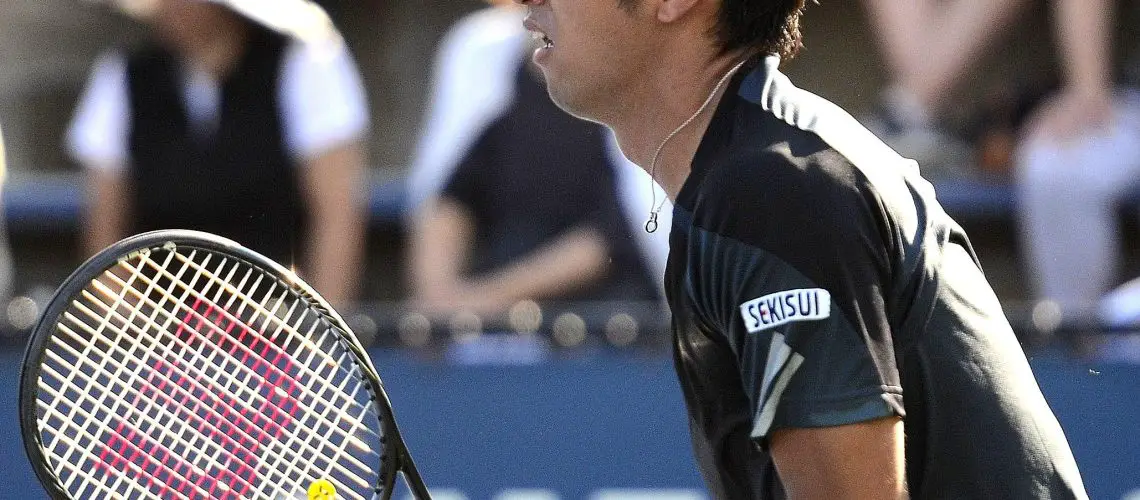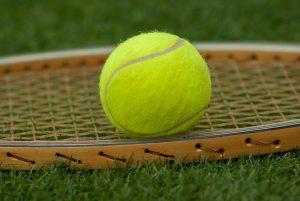We may earn money or products from the companies mentioned in this post.
Brief Overview of Hard Court Tennis

When it comes to tennis, hard courts are a popular surface choice for both recreational and professional players alike These courts, made of concrete or asphalt covered with an acrylic surface, provide a unique playing experience compared to other surfaces like grass or clay
Hard courts offer a faster pace and lower bounce, making it ideal for aggressive players who rely on powerful shots and quick footwork The consistent nature of the surface allows for precise ball control and predictable movement, giving players a sense of confidence in their strokes
1 Explanation of Hard Court Surface
The hard court surface is typically made up of multiple layers that provide durability and elasticity The base layer consists of compacted stone or concrete, followed by an asphalt layer to provide stability Finally, an acrylic coating is applied on top to enhance grip and reduce friction
This combination creates a firm yet slightly cushioned surface that ensures good ball rebound while also allowing players to slide during their movements
2 Popularity and Prevalence of Hard Courts in Professional Tennis
In the world of professional tennis, hard courts are widely used due to their versatility and durability Many prestigious tournaments including Grand Slam events like the US Open and Australian Open are played on hard courts
The popularity of hard courts can be attributed to several factors such as player preference, spectator appeal, and ease of maintenance The fast-paced nature of the game on hard courts often leads to exciting rallies and intense battles between players
Importance of Sliding on Hard Court

Sliding is an essential skill for tennis players competing on hard court surfaces It not only enhances player mobility but also plays a significant role in reducing the risk of injury during quick directional changes
1 Advantages for Player Mobility and Agility
Sliding on hard courts allows players to quickly change direction without losing much speed or balance By utilizing controlled slides, players can reach difficult shots and cover more ground effectively
This ability to slide enables players to maintain their momentum, giving them a competitive edge by allowing them to recover faster and stay in control of the point
2 Reducing the Risk of Injury
Another crucial aspect of sliding on hard courts is injury prevention The abrupt stops and pivots required in tennis can put strain on joints, especially the knees However, sliding helps absorb some of that impact, reducing the stress placed on the body
By incorporating sliding into their movement patterns, players can minimize the risk of injuries such as sprained ankles or twisted knees during intense rallies or sudden changes in direction
Essential Techniques for Sliding on Hard Court Tennis

Proper Footwork and Balance
When it comes to sliding on a hard court in tennis, proper footwork and balance are essential These techniques lay the foundation for a successful slide and help maintain stability throughout the movement It all begins with establishing a strong base and maintaining good body position By doing so, players can generate power and control their movements effectively
During a slide, specific foot placement plays a crucial role Players have two options – using their inside leg or outside leg as the guiding force The choice depends on various factors such as personal preference, agility, and the direction of movement Additionally, mastering the heel-toe or toe-heel technique is key to executing smooth slides on hard courts
An often overlooked aspect of sliding is efficient weight transfer during the movement This means transferring body weight from one foot to another seamlessly while maintaining balance and control By mastering this skill, players can execute fluid slides without sacrificing stability or compromising their positioning on the court
Effective Use of Momentum and Body Positioning
Once footwork and balance are optimized, leveraging momentum becomes crucial in sliding effectively on hard courts in tennis Momentum refers to the energy generated by forward motion that can be harnessed to enhance slide distance and control
In addition to momentum, body positioning plays a significant role in executing successful slides Adjusting one’s body angle relative to the direction of the slide can make all the difference between an effortless glide and an awkward stumble Leaning into or away from the direction of movement influences speed, control, and overall stability during a slide
Maintaining core stability throughout the slide is paramount for optimal performance on hard courts A solid core provides balance and control, allowing players to make quick adjustments during the slide By engaging the core muscles, athletes can maintain a solid foundation and execute slides with confidence
Finally, controlled deceleration is crucial after completing the slide Coming to a stop smoothly and under control ensures that players are ready for their next move Proper deceleration minimizes the risk of injury and allows for quick recovery to continue play efficiently
Drills and Exercises to Improve Sliding Skills

Sliding is an essential skill in many sports, including tennis, baseball, and softball It allows athletes to move quickly and efficiently on the field while reducing the risk of injuries If you want to improve your sliding technique, incorporating drills and exercises into your training routine is crucial Let’s explore some effective methods to enhance your sliding skills
Stretching, Flexibility, and Strength Training Exercises
In order to slide smoothly and prevent muscle strains or pulls, it’s important to have good flexibility and strength in key muscle groups Incorporating dynamic stretches for hip flexors, hamstrings, calves, quads, and other lower body muscles can help prepare your body for sliding movements
Additionally, strengthening exercises such as squats and lunges can target the lower body muscles used during sliding These exercises not only improve muscle strength but also enhance stability and control while executing slides
Specific Drills Designed for Sliding Technique
1 Practice Sliding in Isolation without Hitting Balls
To develop proper sliding technique, it’s beneficial to practice slides in isolation before incorporating them into gameplay scenarios This allows you to focus solely on perfecting your form without distractions
You can try various slide variations like lateral slides (side-to-side), forward slides (diving forward), or backhand slides (sliding backwards). By repeating these movements consistently over time, you’ll build muscle memory and become more comfortable executing them during games
2 Incorporating Sliding within Point Play Scenarios
Another effective approach is integrating sliding drills into point play scenarios For example:
-
a) Shadow Swinging while Incorporating Sliding:
Practice your strokes while incorporating slides as if you were playing a real match This helps simulate game situations and improve your ability to transition smoothly from sliding to hitting -
b) Lively Practice Sessions with Emphasis on Proper Footwork:
Engage in lively practice sessions where you focus on incorporating proper footwork, including slides, into your gameplay This will help develop your agility, timing, and coordination
By regularly engaging in these drills and exercises, you can enhance your sliding skills and become more confident during sports activities that require quick movements on the field Remember to always prioritize safety by wearing appropriate gear and warming up properly before each session
Common Challenges and Tips for Overcoming Them

Fear or hesitation during the slide can be a common challenge for many players The thought of sliding across the court can be intimidating, especially for beginners To overcome this fear, it is important to gradually progress in practice Start with small slides and gradually increase the distance as you build confidence Additionally, using proper footwear and maintaining the court conditions, such as ensuring it is clean and free from debris, can help enhance your sliding experience
Maintaining balance and control during the slide is another challenge that players often face It requires a combination of core stability and body positioning To improve your balance, focus on strengthening your core muscles through exercises like planks and side planks During practice sessions, pay attention to body alignment and make adjustments as needed to maintain control throughout the slide
Injured players or those with pre-existing joint issues need to take extra precautions when attempting sliding techniques It is essential to consult with a medical expert before engaging in any activities that may put stress on injured joints They will provide guidance on whether it is safe to attempt sliding and may suggest modifications to the technique if necessary For example, using a brace can provide additional support to vulnerable joints while still allowing you to enjoy the benefits of sliding
Useful Links

The Art of the Slide | Tennis View Magazine
Sliding In Tennis: Everything You Need To Know
(PDF) Sliding Allows Faster Repositioning during Tennis …
Should You Learn to Slide on the Court?
Glide: The World’s Only Tennis Shoes Made to Slide …
Taking the Slide Move From Clay to Hardcourts
How to Slide on a Clay Court: 5 Steps to Perfect your …
How do professional tennis player slide on hard courts?
Sliding on Hard Court #tennistok #tennistraining #tennis #foryou
Sliderman – by Matthew Willis – The Racquet
Sliding Allows Faster Repositioning during Tennis Specific …
Tennis Court Surface: Pros And Cons Of The Different …
Playing On Clay vs Hard Court
Tennis Tip: Sliding on a Clay Court
Critical shoe contact area ratio for sliding on a tennis hard …
Best Tennis Shoes For Hardcourt Sliding – 5 Good Picks
Carlos Alcaraz breaks his shoes after incredible slide at the …
How the world’s top tennis players ‘slide to get to the ball’
Slide Tennis Shoes
Sliding on hard courts – the future of tennis movement …






